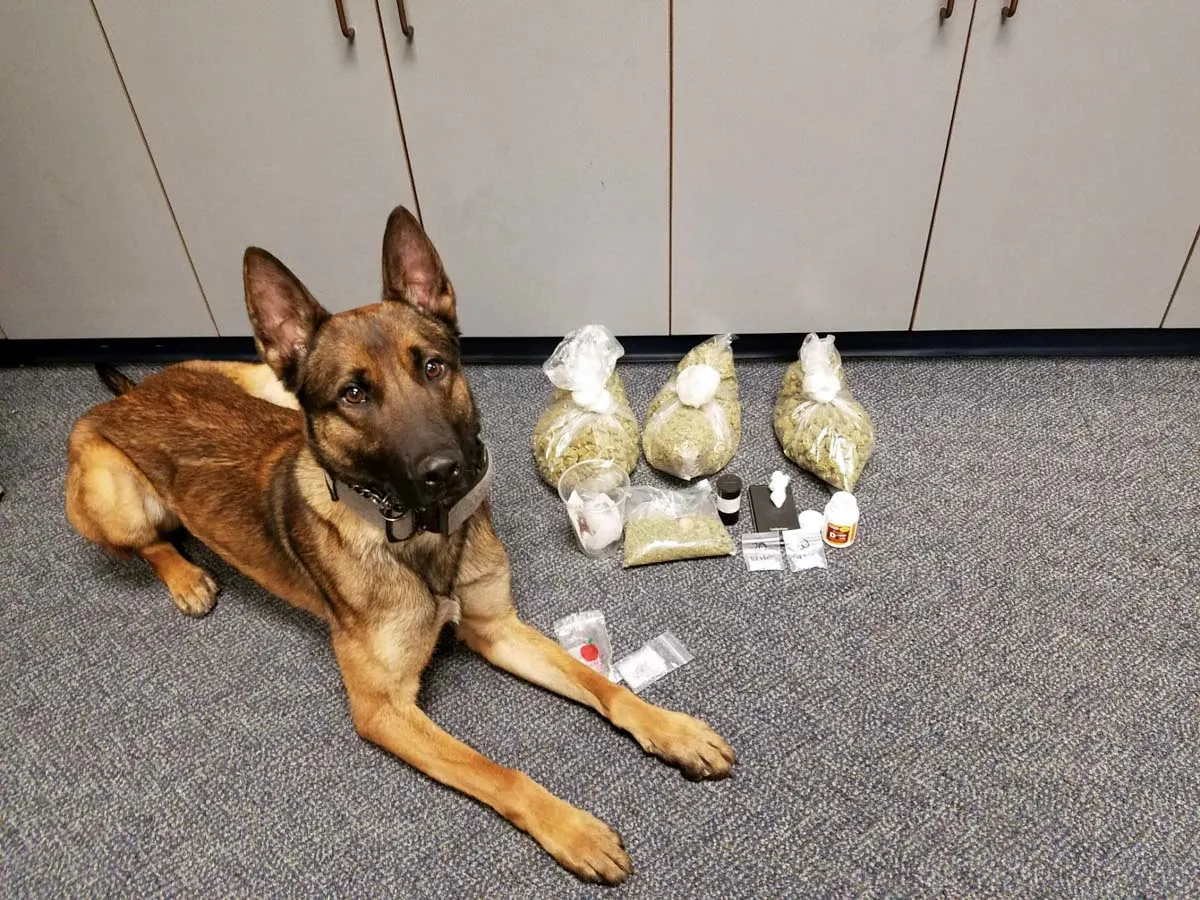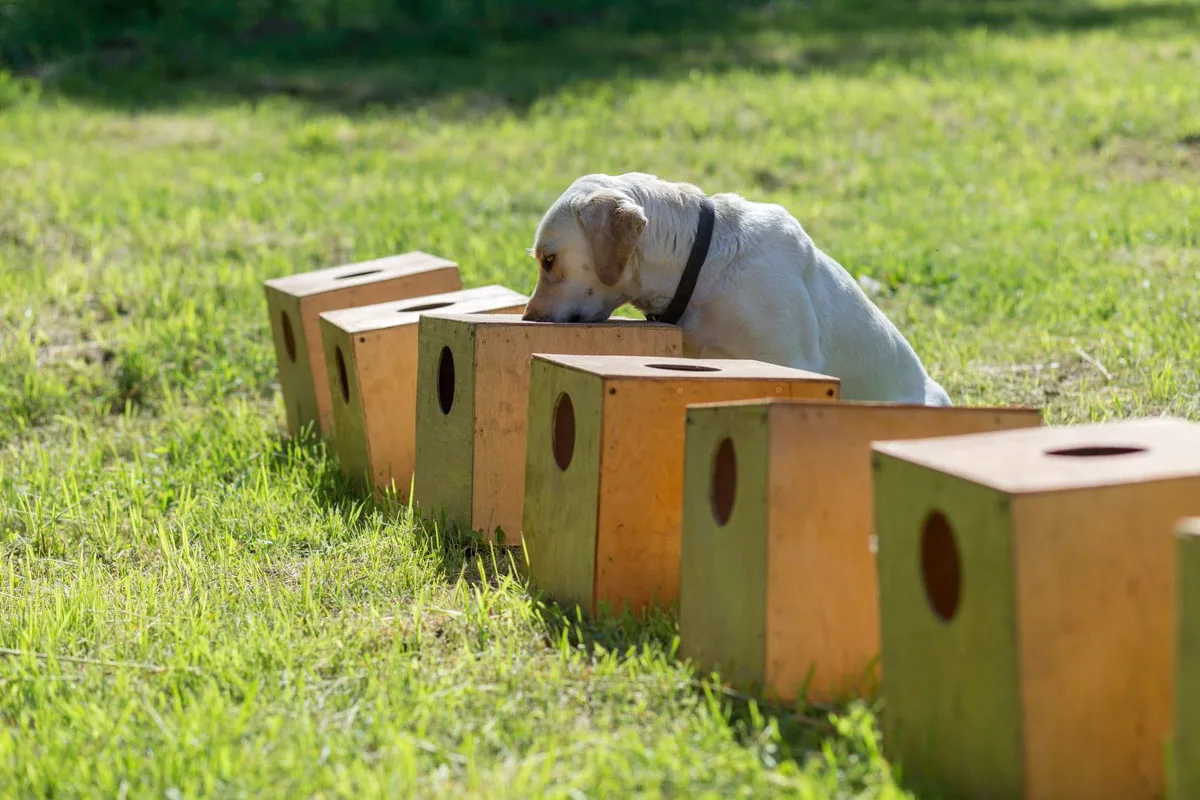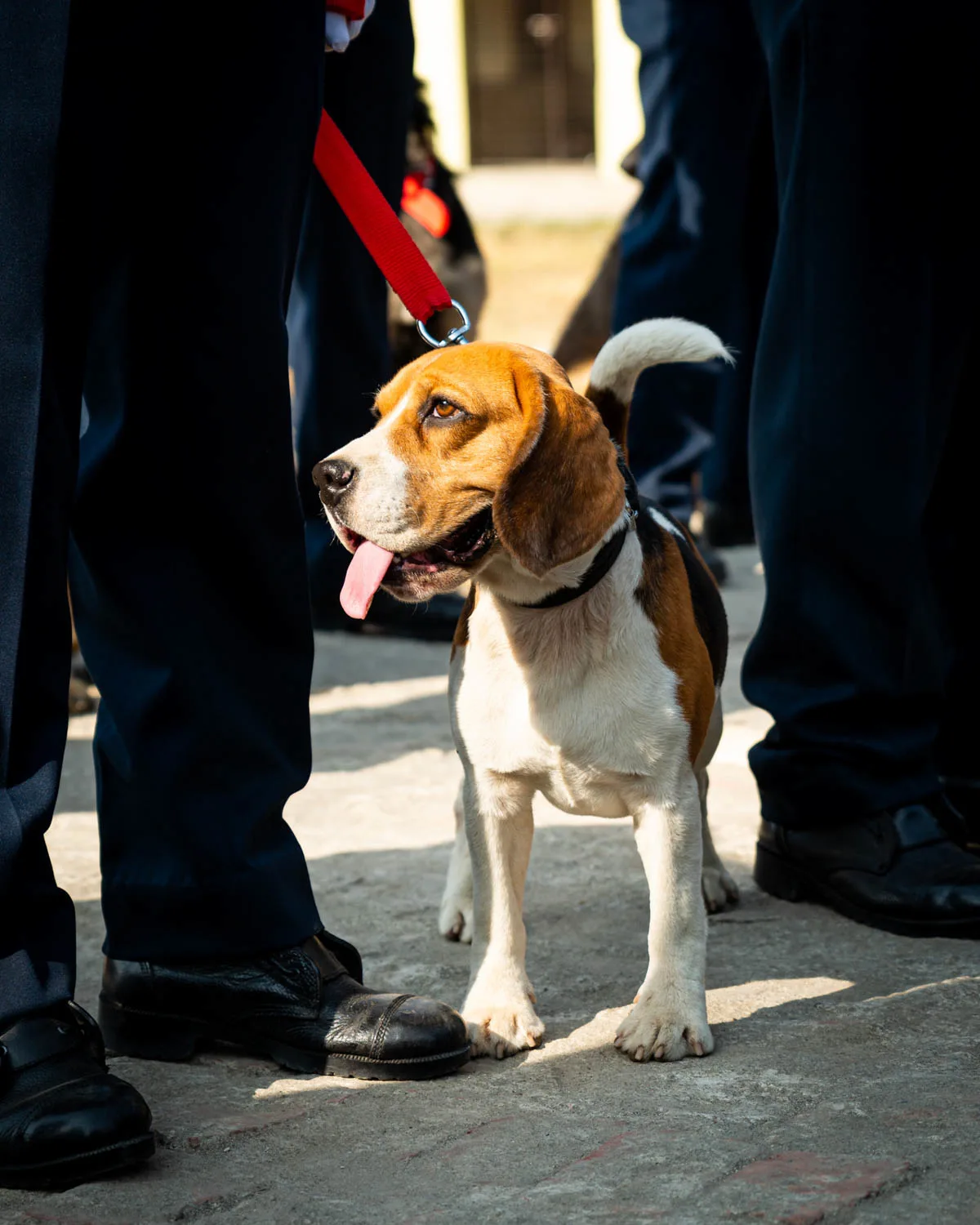Ever wonder which dog breeds are best for drug sniffing? In this article, we’ll explore some of the top drug-sniffing dog breeds and highlight their unique characteristics that make them ideal for this important task.

These remarkable canines possess an exceptional sense of smell, which enables them to detect even trace amounts of illicit substances with remarkable accuracy. Drug dogs have an estimated 125 to 300 million olfactory receptors, depending on the breed and their olfactory bulbs in the brain are much larger than humans
Labrador Retriever
The Labrador Retriever is one of the most popular breeds for single purpose drug detection work. Known for their friendly nature and intelligence, labs have an extraordinary sense of smell, making them highly efficient drug detectors.
Their keen sense of smell, combined with their high energy levels and trainability, makes them a perfect choice for this specialized work. Labs can be found throughout law enforcement agencies at federal, state, county and local levels.
Labs live typically between 10-14 years and are usually retired from drug sniffing around 8 years old.
German Shepherd
German Shepherds are renowned for their keen sense of smell as well as intelligence and they excel in various roles, including drug detection as well as search and rescue.
These highly trainable dogs possess a strong work ethic which allows them to locate hidden narcotics accurately. Their loyalty and protective instincts make them ideal for law enforcement. However, due to several hereditary issues such as hip dysplasia and degenerative myelopathy, many agencies have been replacing aging German Shepherds with Belgian Malinois or Dutch Shepherds.
German Shepherds live typically between 9-13 years and are usually retired from drug sniffing before 8 years old.

Belgian Malinois
Belgian Malinois, often mistaken for small German Shepherds, are agile, confident, and highly driven. They possess an extraordinary sense of smell, as well as a never ending drive to hunt making them excellent drug-sniffing dogs.
Their endurance, exceptional trainability and workaholic tendency make them a clear choice for various law enforcement agencies worldwide. The long haired Belgian malinois known as the Belgian tervuren is often used interchangeably with the standard malinois.
The malinois is a great choice when personal protection and bite work is also needed as part of their working duties.
The breed typically lives between 10-14 years and usually retires from service around 8 years old.
German Shorthaired Pointers
German Shorthaired Pointers may not be as commonly associated with drug detection work as some other breeds, but their olfactory abilities are truly impressive.
These active dogs possess an excellent sense of smell, enabling them to detect illicit substances accurately. With their friendly bold disposition and constant hunt drive, pointers excel at drug detection. They are commonly utilized by agencies such as the TSA which occasionally adopt out dogs that don’t make the cut.
German Shorthaired Pointers typically live between 12-15 years and are usually retired from service before the age of 10.

Beagle
Although Beagles are smaller in size, they are no less effective in drug detection work. These merry and friendly dogs have an exceptional sense of smell, which allows them to detect even the slightest odor of narcotics.
Beagles are often utilized in airports and other transportation hubs due to their compact size and non-threatening appearance, making them less intimidating to the public. They are typically utilized as agricultural detection dogs in those settings.
Beagles typically live 12-15 years and are usually retired from service by 10.
Where are drug sniffing dogs used to smell for drugs?
Short answer is everywhere. These highly trained agile dogs can detect drugs in vehicles, lockers, suitcases, furniture, cargo containers, boats, mail and just about anywhere you can think of.
Drug sniffing dogs are typically not used to sniff people although some law enforcement agencies have been known to utilize them to sniff jail visitors.
They can locate large amounts of drugs even in hidden compartments within car engines.

How are drug dogs trained to smell drugs?
There are many ways to train drug dogs to smell for drugs. The most common process is called imprinting.
A dog can be imprinted on almost any scent whether illegal or not. This is how dogs can smell nicotine and tobacco as well as the chemical substance in magic mushrooms. They can even detect cell phones in prisons and jails.
For a comprehensive list of what drugs these breeds can detect head over to our post titled “What Can Drug Dogs Smell?“
During the imprinting process, a specific odor is presented to the dog in a tube or a scent box. When the dog’s nose hits the tube with the odor, a verbal marker or clicker is used and the dog is then rewarded with either food or a toy. Repetition of this process is how the dog learns to sniff out specific drugs.
Sometimes a scent training wheel, which is a large wheel that contains numerous boxes on the end of each arm is used. The arms each hold a container, one of which is loaded with the target odor. The drug dog is marked and rewarded when it smells the box with the target odor.
Once the dog correctly identifies the specific odor they are then trained to perform a final response to the target odor. In most cases, for drug dogs, this response is to sit and stare at the source of the target odor. Less commonly, some drug dogs are trained to scratch.
Which is the best drug sniffing dog breed?
Drug-sniffing dogs, regardless of their breed, play an invaluable role in law enforcement efforts to combat drug trafficking.
Whether it’s the Labradors’ intelligence, the German Shepherds’ versatility, the Belgian Malinois’ agility, the German Shorthaired Pointers’ drive, or the Beagles’ compact size, each breed brings its unique strengths to the table.
The dedication, training, and exceptional olfactory abilities of these canine heroes contribute significantly to the safety and security of our communities.

